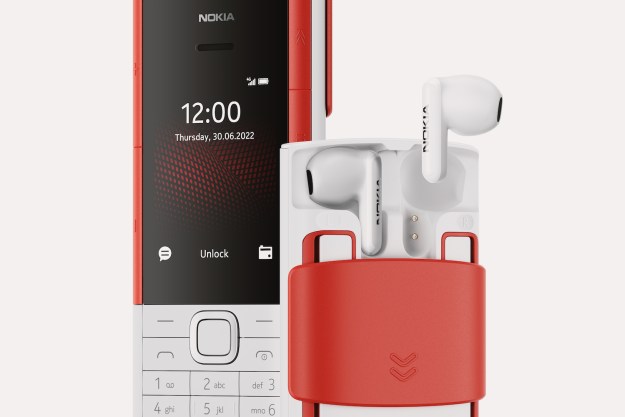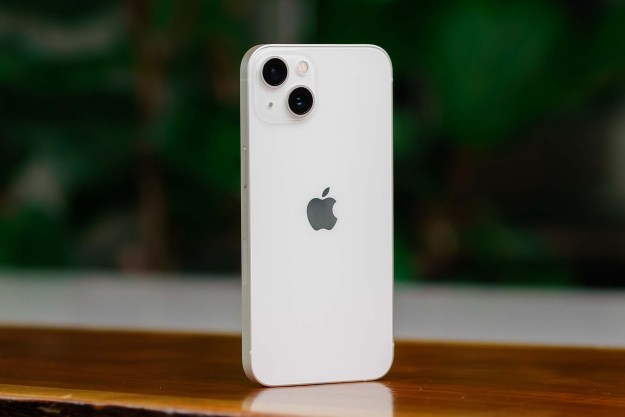Did you know there’s a successful British mobile phone company? You probably haven’t heard of the Bullitt Group, but this eight-year-old white label manufacturer helped build the rugged phone market. So far, Bullitt has turned out phones under the JCB, Caterpillar, and Kodak brands, and is set to launch a Land Rover smartphone later this year.
In an industry where few companies beyond Samsung and Apple are consistently making money, the Bullitt Group has managed to turn a profit by focusing on neglected areas of the market.
“There’s always a segment or an audience or a niche that’s left behind or ignored by the mainstream manufacturers,” Charlie Henderson, chief brand officer for Bullitt Group told Digital Trends. “They can be a really exciting group to work with.”
“There’s always a segment or an audience or a niche that’s left behind or ignored…”
Starting with the JCB brand, and now with Caterpillar, Bullitt initially pursued people looking for rugged and tough devices they could use anywhere from construction sites to the beach. By catering for all kinds of groups including farmers, engineers, the military, and extreme sports fans, they began to grow and build a loyal audience.
“We really get into the detail, and get to know who these people are,” Henderson said. “Working out where their pain points are, where they think they’re being ignored, and what would be their dream product.”
Most recently, the Bullitt Group won praise for the CAT S60, which tops our list of the best rugged phones. But just making an IP68-rated tough device wasn’t enough. Bullitt incorporated a lot of focus group feedback and worked to make sure that common complaints were dealt with, so, for example, people could use the phone with gloves on, with wet fingers, or in direct bright sunlight.

The Cat S60 captured a lot of media attention because of the integrated infrared camera by Flir, which provides thermal imaging that instantly highlights hotspots around you. Construction workers can use it to see gaps in insulation, plumbers can track hot water, and there are lots of potential uses for emergency services. But Henderson tells us that people are fast finding their own use cases for the technology, from checking the temperature on grills, to finding their pets at night.
Part of the reason smartphones have been so successful is because of convergence — combining different devices to give you a lot of useful functionality in one device. Integrating the thermal imaging is an extension of that idea and Bullitt won’t be stopping there.
“We’re looking at putting more sensor technology into rugged devices,” Henderson said. “Because we know that people have got tools in their tool bag and it’s one less thing to have to worry about losing, breaking, charging, or whatever.”
Rugged phones have been Bullitt’s bread and butter for the last few years.
Rugged phones have been Bullitt’s bread and butter for the last few years. The company still sells a lot of feature phones in the rugged market and the Cat S60 has served as a flagship device for the brand, but Bullitt does not intend to be pigeonholed.
A partnership with Kodak resulted in the recent Kodak Ektra, an Android smartphone with a 21-megapixel camera, intended to mimic a point-and-shoot camera and tap into the analog renaissance. Bullitt worked closely with Kodak to develop the device.
“We were in touch on a daily basis debating design, materials, UI, UX, the whole lot,” Henderson said.
One of the key elements with a Kodak phone was to nail the camera, so Bullitt worked with Arcsoft, a leader in imaging technology with real expertise in camera optimization for smartphones. Rather than trying to develop their own Bokeh defocus background functionality or algorithms, for example, they relied on Arcsoft.
This willingness to work with outside expertise is an important part of Bullitt’s philosophy. The company also engaged radiofrequency specialists to help ensure that the ruggedized Cat S60, which has a metal band around it, could consistently get a signal.

“We don’t try and pretend we know everything,” Henderson said. “With the pace of technology change it’s important to have that network of relationships, that’s why we’re successful as a relatively small company.”
The Bullitt Group distributes devices to well over 100 markets now, but predominantly sells in Europe, the Middle East, and Africa. The U.S. market is complicated by carrier demands, but it’s on the horizon and Bullitt recently opened an office in Singapore to target Asia.
There hasn’t been a great deal of competition in the rugged phone market.
“A couple of the mainstream manufacturers have experimented, seen that it’s maybe not as easy as it looks,” Henderson said. “Maybe they shy away, maybe they stick with it, we’ll see, but they tend to leave it to us and that’s not because the opportunity isn’t there, it’s just because it’s difficult.”
“We know we need to innovate and be creative, but we feel well-positioned right now.”
Samsung has released Active versions of its Galaxy S range, most recently the Galaxy S7 Active, and LG recently released the X Venture, but it’s proven to be a harder market to crack than they might have expected. Bullitt has tapped into something that’s working and it doesn’t face the same pressure to sell vast numbers of devices.
“We’re not resting on our laurels,” Henderson said. “We know we need to innovate and be creative, but we feel well-positioned right now.”
Since Bullitt’s success with Caterpillar, more and more brands have been approaching the company, but they remain cautious about partnering and have said no a lot.
“It’s not about getting a cool brand and making something interesting,” Henderson said. “It’s about identifying an audience whose needs are unmet.”
That’s why Bullitt is so excited about the partnership with Land Rover, because they feel there is room for a device that targets the outdoor space. It will be interesting to see what the company delivers later this year.
As for devices under the Bullitt brand, we may see something soon, but it won’t be a Bullitt phone. The company has released other consumer electronics with brands like Ministry of Sound and Ted Baker, and it’s poised to unveil something new before the end of the year, but Henderson is tight-lipped. He admits being purposely vague when he says, “connected devices”.
“Whether we are ready to be a consumer-facing brand is a debate we’ll continue to have,” he said. “It’s something we debate energetically in-house a lot. Originally, it’s a business where the founders were very proud of our invisibility, because it was about the proposition and the brand speaking for themselves, but we’re reaching a critical mass now.”
The Bullitt Group expects to employ 200 people by the end of the year and it has agreements with suppliers across the globe, close relationships with factories in Taiwan and China, and partnerships with a number of big brands. If Bullitt continues to find success with other brands, then we may see it emerge from the shadows yet.
Editors' Recommendations
- iOS 18 could make my iPhone look like Android, and I hate it
- This company just announced lots of new Android phones, and they look great
- Apple hints at cunning plan to make you spend even more on an iPhone
- The EU wants Apple and Samsung to make more repairable phones, improve battery efficiency
- Discord is making its Android app more like iOS, and in a good way

